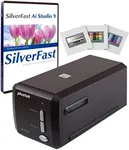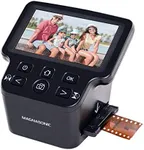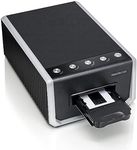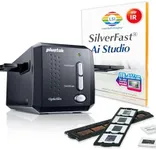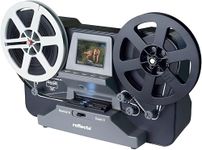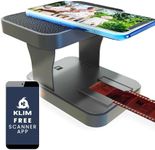Buying Guide for the Best Negative Scanners
Choosing the right negative scanner can be a bit overwhelming, but with the right approach, you can find the perfect fit for your needs. Negative scanners are used to convert film negatives into digital images, preserving your memories in a modern format. When selecting a negative scanner, it's important to consider several key specifications to ensure you get the best quality and functionality for your specific requirements. Here are the key specs to look out for and how to navigate them.ResolutionResolution is measured in dots per inch (DPI) and determines the level of detail the scanner can capture from your negatives. Higher resolution means more detail and larger file sizes. For general use and sharing online, a resolution of 2400 DPI is usually sufficient. For professional use or large prints, look for scanners with 4000 DPI or higher. Consider your end use: if you plan to print large photos or need high detail, opt for higher resolution; for casual use, a lower resolution will suffice.
Dynamic RangeDynamic range measures the scanner's ability to capture the range of tones in your negatives, from the darkest shadows to the brightest highlights. It is often expressed as a number, with higher numbers indicating better performance. A dynamic range of 3.0 is adequate for most users, but for professional quality and better detail in shadows and highlights, look for a dynamic range of 4.0 or higher. If you have negatives with a lot of contrast or want to ensure the best quality, prioritize a higher dynamic range.
Scan SpeedScan speed refers to how quickly the scanner can digitize your negatives. This is usually measured in seconds per scan. Faster scan speeds are beneficial if you have a large number of negatives to digitize, as it will save you time. However, faster speeds can sometimes compromise quality. If you have a large collection, look for a balance between speed and quality. For occasional use, scan speed may be less critical, and you can afford to prioritize other features.
Color DepthColor depth, measured in bits, indicates how many colors the scanner can capture. Higher color depth means more accurate and vibrant colors. Most scanners offer 24-bit color depth, which is sufficient for general use. For professional use or if you want the most accurate color reproduction, look for scanners with 48-bit color depth. Consider the importance of color accuracy in your digitized images when choosing the color depth.
SoftwareThe software that comes with the scanner can greatly affect your experience. Good software can make it easier to edit, organize, and share your scanned images. Look for scanners that come with user-friendly software that offers features like dust and scratch removal, color correction, and batch scanning. If you are not tech-savvy, prioritize scanners with intuitive and easy-to-use software. If you are comfortable with technology, advanced software features might be more appealing.
CompatibilityCompatibility refers to whether the scanner can work with your computer's operating system and hardware. Ensure that the scanner you choose is compatible with your current setup, whether you use Windows, macOS, or another operating system. Check for any specific hardware requirements, such as USB ports or memory capacity. If you have a specific operating system or hardware setup, make sure the scanner is compatible to avoid any issues.
Size and PortabilityThe size and portability of the scanner can be important if you have limited space or need to move the scanner frequently. Smaller, portable scanners are convenient for occasional use and easy storage, while larger scanners may offer more features and better quality. Consider where you will be using the scanner and how often you will need to move it. If space is limited or you need a scanner for travel, opt for a compact model. For a dedicated scanning station, a larger model may be more suitable.

